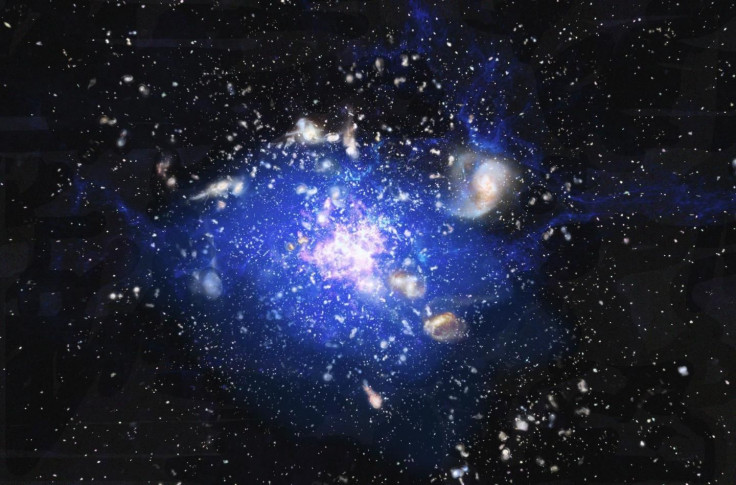A Massive Galaxy Cluster From The Dawn Of Time May Reshape Our Understanding Of Galactic Formation

Astronomers studying an extremely distant cluster of embryonic galaxies have stumbled upon a surprising finding — one that may reshape our understanding of how stars and galaxies formed in the early universe.
The cluster, located roughly 10 billion light-years from Earth and seen as it was when the universe was less than four billion years old, contains within it a giant protogalaxy — the Spiderweb Galaxy. Observations made using the Australia Telescope Compact Array and the National Science Foundation’s Very Large Array in the U.S. indicate that this object, which is — or was — still in its infancy, is forming from a surprisingly dense soup of molecular gas.
“It is surprising how cold this gas is, at some 200 degrees below zero Celsius. We would have expected a lot of collapsing galaxies, which would have heated the gas,” Matthew Lehnert from the Astrophysics Institute of Paris, who co-authored a new study detailing the observations, said in a statement.
In our local universe, massive galaxy clusters form over millions, or even billions, of years as smaller galaxies move closer due to gravitational attraction. However, this particular cluster — believed to be rich in molecular hydrogen — may have condensed directly from a cold cloud of gas in which it is submerged.
Moreover, the presence of carbon monoxide in the gas indicates that it came from the core of earlier generation of stars, where carbon and oxygen were created by fusion reactions. This gas, most of which is present in the space between the protogalaxies, would then have been released when these stars went supernova.
“We’re realising that lots of things we thought we knew about the universe are really based on what's going on in the modern universe,” study co-author Ray Norris, an astrophysicist at the Commonwealth Scientific and Industrial Research Organisation in Australia, told ABC News. “ As we learn more and more about the early universe, we're realising there's quite a few things that are pretty different back there.”
© Copyright IBTimes 2025. All rights reserved.






















